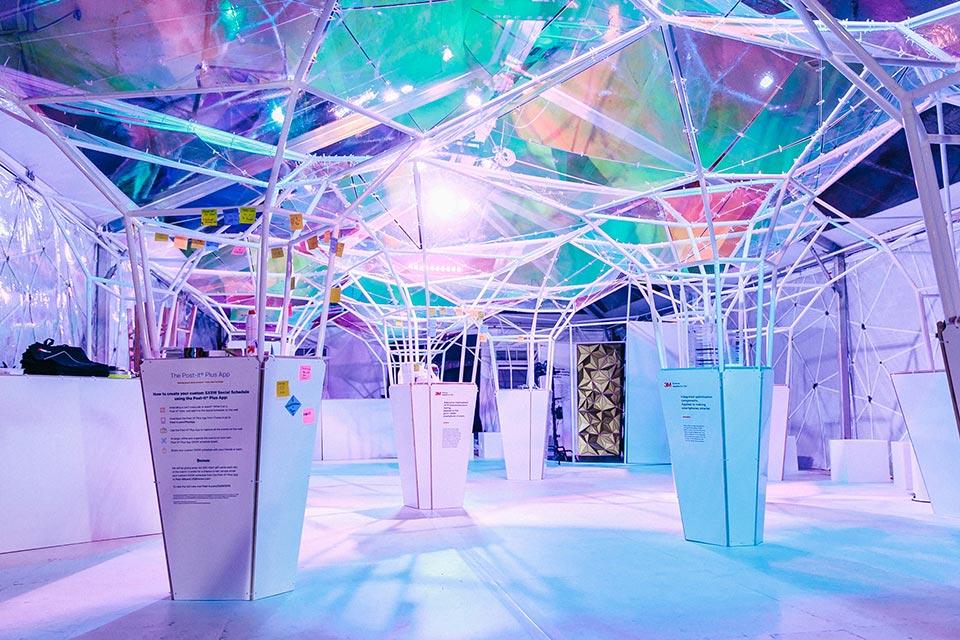
It began as a small-scale mining venture back in 1902, and now 3M–once known as the Minnesota Mining and Manufacturing Co.–has moved on from that first vision of the five founders who worked to harvest a mineral known as corundum from a mine called Crystal Bay. While that mine didn’t produce much corundum, it did inspire a spirit of innovation and collaboration within the company that led to a wide range of other materials and other products. At this point, 3M is responsible for making 60,000 products used worldwide. The company has operations in 70 countries and sales in 200.
The finished product, the 3M LifeLab Pavilion, included structural elements like a ceiling, partitions, and display areas all awash in the prismatic light which passed through 3M dichroic film. It’s an ultra-thin filter which uses highly saturated colors.
SOFTlab, a New York City design studio, is the work of Michael Szivos, a critic at Yale School of Architecture and adjunct professor at Columbia University’s Graduate School of Architecture, Planning and Preservation. Szivos has been involved in the design and production of projects ranging from digitally fabricated sculpture to interactive design and immersive digital video installations. In 2012, SOFTlab was awarded the Architectural League Prize for Young Architects & Designers and the firm’s design projects have been featured by MoMA, The Metropolitan Museum of Art, The New Museum and The New York Times.
As for the LifeLab, all the interior elements were constructed and laminated with a glossy white version of 3M’s Di-Noc architectural finish. The exterior of the structure was covered with Scotchlite fabric. Somewhere around 3,000 3M cable ties helped hold the various structural and cladding elements in place.
The pavilion had 20 uniquely-shaped columns and featured film which changed color and reflectivity as it was viewed from different angles. The daily movement of the sun created a shifting, dynamic kaleidoscope of light on the glossy white surfaces of the interior as it progressed throughout the day.
What do you think of the 3M LifeLab Pavilion and its use of 3D printing to connect the joints? Can you see other applications for 3D printed pieces in architectural settings? Let us know in the 3M LifeLab Pavilion forum thread on 3DPB.com. Check out the video below showing a fast look at the pavilion’s construction.